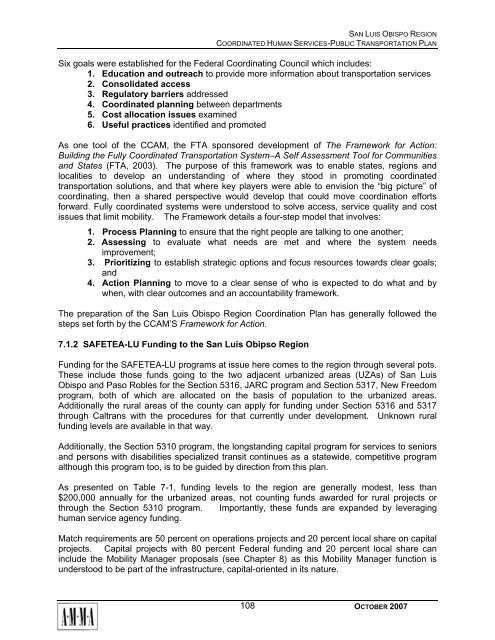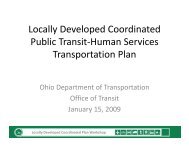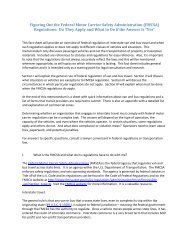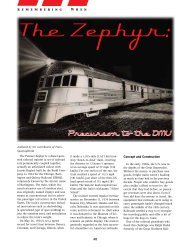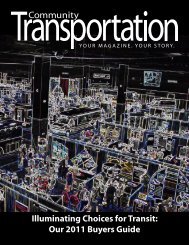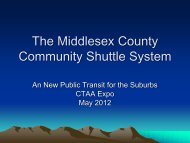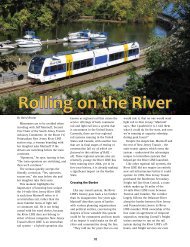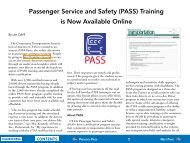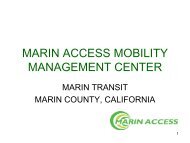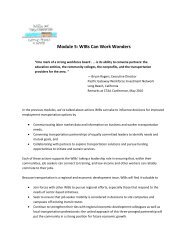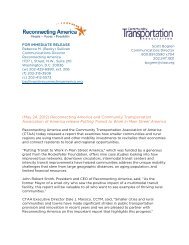San Luis Obispo - Caltrans - State of California
San Luis Obispo - Caltrans - State of California
San Luis Obispo - Caltrans - State of California
You also want an ePaper? Increase the reach of your titles
YUMPU automatically turns print PDFs into web optimized ePapers that Google loves.
SAN LUIS OBISPO REGION<br />
COORDINATED HUMAN SERVICES-PUBLIC TRANSPORTATION PLAN<br />
Six goals were established for the Federal Coordinating Council which includes:<br />
1. Education and outreach to provide more information about transportation services<br />
2. Consolidated access<br />
3. Regulatory barriers addressed<br />
4. Coordinated planning between departments<br />
5. Cost allocation issues examined<br />
6. Useful practices identified and promoted<br />
As one tool <strong>of</strong> the CCAM, the FTA sponsored development <strong>of</strong> The Framework for Action:<br />
Building the Fully Coordinated Transportation System–A Self Assessment Tool for Communities<br />
and <strong>State</strong>s (FTA, 2003). The purpose <strong>of</strong> this framework was to enable states, regions and<br />
localities to develop an understanding <strong>of</strong> where they stood in promoting coordinated<br />
transportation solutions, and that where key players were able to envision the “big picture” <strong>of</strong><br />
coordinating, then a shared perspective would develop that could move coordination efforts<br />
forward. Fully coordinated systems were understood to solve access, service quality and cost<br />
issues that limit mobility. The Framework details a four-step model that involves:<br />
1. Process Planning to ensure that the right people are talking to one another;<br />
2. Assessing to evaluate what needs are met and where the system needs<br />
improvement;<br />
3. Prioritizing to establish strategic options and focus resources towards clear goals;<br />
and<br />
4. Action Planning to move to a clear sense <strong>of</strong> who is expected to do what and by<br />
when, with clear outcomes and an accountability framework.<br />
The preparation <strong>of</strong> the <strong>San</strong> <strong>Luis</strong> <strong>Obispo</strong> Region Coordination Plan has generally followed the<br />
steps set forth by the CCAM’S Framework for Action.<br />
7.1.2 SAFETEA-LU Funding to the <strong>San</strong> <strong>Luis</strong> Obipso Region<br />
Funding for the SAFETEA-LU programs at issue here comes to the region through several pots.<br />
These include those funds going to the two adjacent urbanized areas (UZAs) <strong>of</strong> <strong>San</strong> <strong>Luis</strong><br />
<strong>Obispo</strong> and Paso Robles for the Section 5316, JARC program and Section 5317, New Freedom<br />
program, both <strong>of</strong> which are allocated on the basis <strong>of</strong> population to the urbanized areas.<br />
Additionally the rural areas <strong>of</strong> the county can apply for funding under Section 5316 and 5317<br />
through <strong>Caltrans</strong> with the procedures for that currently under development. Unknown rural<br />
funding levels are available in that way.<br />
Additionally, the Section 5310 program, the longstanding capital program for services to seniors<br />
and persons with disabilities specialized transit continues as a statewide, competitive program<br />
although this program too, is to be guided by direction from this plan.<br />
As presented on Table 7-1, funding levels to the region are generally modest, less than<br />
$200,000 annually for the urbanized areas, not counting funds awarded for rural projects or<br />
through the Section 5310 program. Importantly, these funds are expanded by leveraging<br />
human service agency funding.<br />
Match requirements are 50 percent on operations projects and 20 percent local share on capital<br />
projects. Capital projects with 80 percent Federal funding and 20 percent local share can<br />
include the Mobility Manager proposals (see Chapter 8) as this Mobility Manager function is<br />
understood to be part <strong>of</strong> the infrastructure, capital-oriented in its nature.<br />
108<br />
OCTOBER 2007


